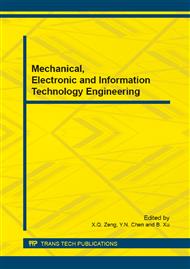[1]
PIARC Technical Committee 3. 3 Road Tunnel Operation, 2008. Risk Analysis for Road Tunnels, May (2008).
Google Scholar
[2]
Kerstin Lemke. Road Safety in Tunnels. Transportation Research Record, 2007. Volume 1740. pp.170-174.
Google Scholar
[3]
Ma Zhuanglin, Shao Chunfu, Zhang Shengrui. Characteristics of traffic accidents in Chinese freeway tunnels. Tunnelling and Underground Space Technology 24. 2009. pp: 350–355.
DOI: 10.1016/j.tust.2008.08.004
Google Scholar
[4]
Beard, A., Carvel, C.,. The Handbook of Tunnel Fire Safety. Thomas Telford Publishing, 2005. London.
Google Scholar
[5]
PIARC. Road safety in tunnels. PIARC Technical Committee on Road Tunnels, (1995).
Google Scholar
[6]
Linjun Lu, Jian Lu, Yingying Xing, Chen Wang, and Fuquan Pan. Discrete Dynamics in Nature and Society, Volume, 2014, pp.1-7.
Google Scholar
[7]
F. H. Amundsen and G. Ranes. Studies on traffic accidents in Norwegian road tunnels. Tunnelling and Underground Space Technology, 2000. Vol. 15, No. 1, pp.3-11.
DOI: 10.1016/s0886-7798(00)00024-9
Google Scholar
[8]
Jian Sheng Yeung, Yiik Diew Wong. Road traffic accidents in Singapore expressway tunnels. Tunnelling and Underground Space Technology. 2013. 38. p.534–541.
DOI: 10.1016/j.tust.2013.09.002
Google Scholar
[9]
Kerstin Lemke. Road Safety in Tunnels. Transportation Research Record, 2007. Volume 1740. pp.170-174.
Google Scholar
[10]
Geva Vashitz, David Shinar, Yuval Blum. In-vehicle information systems to improve traffic safety in road tunnels. Transportation Research Part F 11, 2008 p.61–74.
DOI: 10.1016/j.trf.2007.07.001
Google Scholar
[11]
Lord, D., Mannering, F., 2010. The statistical analysis of crash-frequency data: a review and assessment of methodological alternatives. Transportation Research Part A 44 (5), pp: 291–305.
DOI: 10.1016/j.tra.2010.02.001
Google Scholar
[12]
Savolainen et al. The statistical analysis of highway crash-injury severities: A review and assessment of methodological alternatives Accident Analysis and Prevention 43 (2011) pp: 1666– 1676.
DOI: 10.1016/j.aap.2011.03.025
Google Scholar
[13]
Abdel-Aty M. Analysis of driver injury severity levels at multiple locations using ordered probit models. Journal of Safety Research 34 (5), 597–603 (2003).
DOI: 10.1016/j.jsr.2003.05.009
Google Scholar
[14]
Chimba, D., Sando, T. Neuromorphic prediction of highway injury severity. Advances in Transportation Studies, 2009. 19 (1), 17–26.
Google Scholar
[15]
Kara Maria Kockelman, Young-Jun Kweon. Driver injury severity: an application of ordered probit models. Accident Analysis and Prevention 34 (2002) 313– 321.
DOI: 10.1016/s0001-4575(01)00028-8
Google Scholar
[16]
Qiang Meng, Xiaobo Qu. Estimation of rear-end vehicle crash frequencies in urban road tunnels. Accident Analysis and Prevention, 48. 2012. 254–263.
DOI: 10.1016/j.aap.2012.01.025
Google Scholar
[17]
Ciro Caliendo, et al. A crash-prediction model for road tunnels. Accident Analysis and Prevention. 2013. 55 p.107–115.
DOI: 10.1016/j.aap.2013.02.024
Google Scholar


